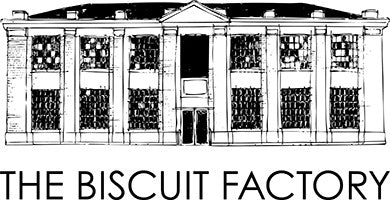Ade Adesina is a printmaker based in Aberdeen, Scotland. He was born in a city called Ibadan, Nigeria and moved to the UK in the early 2000s. He studied Fine Art at Bexley College in 2007 before moving to Scotland to further his education at Grays School of Art, Robert Gordon University, Aberdeen. Ade graduated in 2012 with BA Honours in Printmaking and is now an acclaimed contemporary printmaker, being a Royal Scottish Academician.
Ade mostly works with various printmaking mediums including linocut, woodcut and etching, and has experimented with installations, sculpture making and oil painting in the past. His show 'Phantom' is on display at The Biscuit Factory until the end of January 2023



